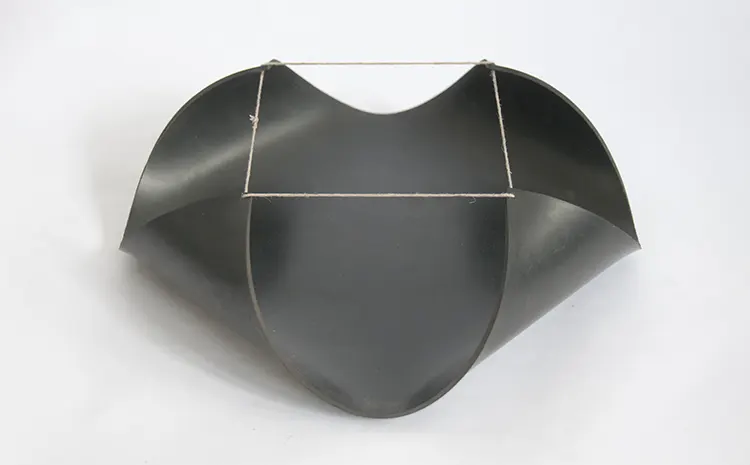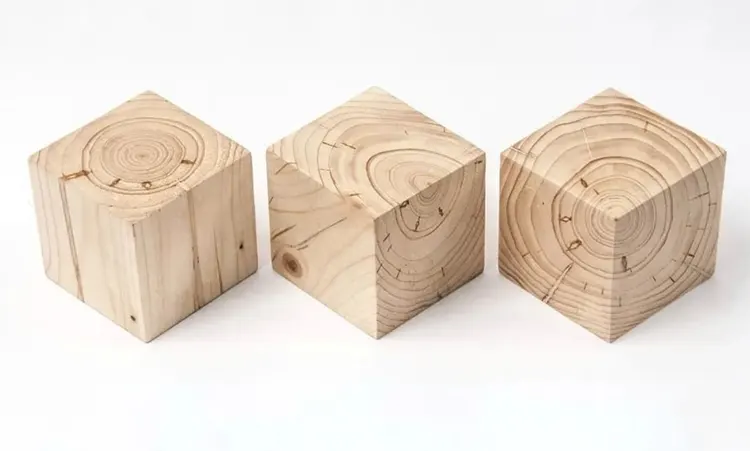“Contrasts and simplicity are recurring themes in my art.”
The Innovative Journey of Nico Kok
The esteemed visual artist, Nico Kok, stands tall in the realm of contemporary art, and has been a relentless innovator and boundary-pusher for over four decades. Having graduated from the prestigious Gerrit Rietveld Academy, after studying sculpture there from 1973 to 1978, Kok has anchored his life and work in the charming Dutch town of Heemskerk, Netherlands.
A master of subverting the familiar, Kok’s artistry lies in transforming ordinary shapes and materials into extraordinary visuals. His work thrives on the principles of contrast and simplicity, recurring themes that underpin his profound aesthetic philosophy. Kok has gained renown for his unique methodologies that amplify the inherent qualities of his chosen materials, adding a distinct layer of depth and intrigue to his oeuvre.
Among the various geometrical forms that find their place in Kok’s art, the square is often a standout. It demonstrates his fine attention to detail and a penchant for exploring fundamental shapes. The selection of materials is also a vital component of his artistic practice. Kok explores the properties of different materials and shapes, a process that adds unpredictable dynamism to his work, making each piece a thrilling exploration of form and texture.
While his creations appear deceptively simple in design, the outcomes are anything but predictable or ordinary. They subtly challenge the viewer’s expectations, resulting in a sublime visual experience that is as engaging as it is unpredictable.
Beyond the realm of visual arts, Kok brings an unparalleled breadth of experience from his nearly 50-year career in the steel industry. Employed at Tata Steel since 1972, where he has been a process operator for the last two decades, Kok has had the unique opportunity to engage with a diverse range of materials. This extensive exposure has fuelled his inventive spirit, enabling him to devise innovative techniques like the rubbing method with used graphite crucibles. The crucibles, initially used to determine nitrogen levels in steel – a factor that influences steel quality – have found a second life in Kok’s hands, further exemplifying his extraordinary ability to perceive and unleash the hidden beauty within the mundane.

Seeking Simplicity: Nico Kok’s Artistic Evolution
Nico Kok has nurtured a lifelong curiosity towards diverse materials and innovative techniques, an interest that stretches back to his formative years. His exploratory spirit was paired with an insatiable need to understand the inner workings of things, a facet that remains ingrained in his artistic process. Constant experimentation with materials and techniques became a natural part of his creative evolution. He consistently finds himself drawn to the novelty of new materials, fresh challenges, and unprecedented ideas.
However, Kok understands that a plethora of ideas can sometimes overshadow the purity of a work’s essence. In his creative journey, new insights often materialize during the ideation and development phases. He maintains an ongoing quest for novel materials and uncharted concepts, recognizing that some ideas can only materialize through specific materials, occasionally ones he has yet to explore. Therefore, his decision to pursue studies at the art academy was a natural progression, given his deep-rooted interest.
Kok is persistently on a journey towards uncovering the core or essence of his work. He aims to retain simplicity in his artistic expressions, frequently employing basic geometric shapes like squares.
The year 1979 marked a pivotal point in Kok’s artistic journey. He undertook a bicycle trip to Paris’s Centre Pompidou, where he serendipitously discovered the studio of Constantin Brancusi situated across the Centre. This encounter proved to be a revelation, profoundly impacting his approach to art.
Kok’s inspiration is often drawn from artists of the Minimal Art movement, their influence perceptible in his exploration of form, shape, and simplicity. Their profound impact on his work continues to fuel his artistic endeavors, guiding him on his journey towards unearthing the essence of art.

Unveiling Symbolism: Tensioned Square by Nico Kok
Analyzing the creative oeuvre of Nico Kok, a work that notably stands out for its intrinsic symbolism and artistry is “Tensioned Square.” This piece, from Kok’s perspective, signifies a commendable instance of his artistic capabilities. In this unique creation, Kok innovatively bends the corners of a rubber square by connecting them with a rope. The resultant formation is a new square, characterized by its distinctive openness and a perceptual shift from the original construct.
The allure of “Tensioned Square” lies in its deceptively simple design, the clever utilization of raw materials, and the elegance that emerges from the juxtaposition of curved rubber and the stretched rope square. Through the act of bending the rubber, Kok reveals the hidden side of the material, thereby creating a novel dialogue between the visible and concealed. Furthermore, the deformity inflicted on the original square imparts birth to a fresh geometric shape, creating a captivating transformation.
A plethora of contrasts invigorate the piece, including the interplay between black rubber and light brown rope, open and closed squares, and curved and straight lines. Other dichotomies that enrich the piece are front versus back, rough against smooth, and the process of forming and deforming.
Kok’s artistic explorations extend to other materials as well, with current endeavors focused on the fabric jute. Through the careful removal of horizontal or vertical threads, Kok can manifest another square form, a concept that is still in its embryonic stage.
The process of bringing an idea to fruition, as Kok candidly admits, often opens up avenues for unexpected discoveries. For instance, he was surprised to observe the vertical threads lengthening upon the removal of the horizontal ones, a characteristic that presented new artistic possibilities. Therefore, Kok remains undaunted by these surprises, instead, valuing them as conduits for opening up unforeseen opportunities and deepening his creative journey.

The Allure of Spheres: Nico Kok’s Enduring Fascination
Nico Kok’s artistic journey has been profoundly influenced by the unique allure of spherical shapes. A sphere, in its compact form, embodies an intriguing instability, capable of unpredictable motion in every conceivable direction. Yet, once it is bisected, the resulting hemispheres possess an enduring stability. Even when these hemispheres are pushed off balance, their innate equilibrium brings them back to rest.
This peculiar fascination has instilled within Kok a deep desire to craft a sizeable sphere out of polished black granite, sliced along its equatorial line. This creative aspiration would generate two hemispheres, sitting stably on the ground, their pitch-black polished exteriors contrasting sharply with the rough, gray-hued circular surfaces laid bare.
The task of splitting a granite sphere into two halves is formidable, thus necessitating a unique approach. The first step involves splitting a granite cube, which is subsequently glued back together and sculpted into a sphere. The final act of separating the halves would require the application of heat, resulting in the glue melting and revealing two individual halves.
The artwork of Kok is a testament to multiple themes, with a significant focus on the inherent characteristics of materials, the processes involved in their transformation, and their potential applications. These pieces, though undeniably physically demanding, are made even more challenging by the requisite use of water, necessitating a specifically equipped workplace.
Kok, reflecting on his extensive artistic career, acknowledges that the physical intensity required to complete such a piece may have been achievable two decades prior, but now proves challenging. However, should a prospective buyer emerge, he remains open to the possibility of commissioning the work’s completion.





